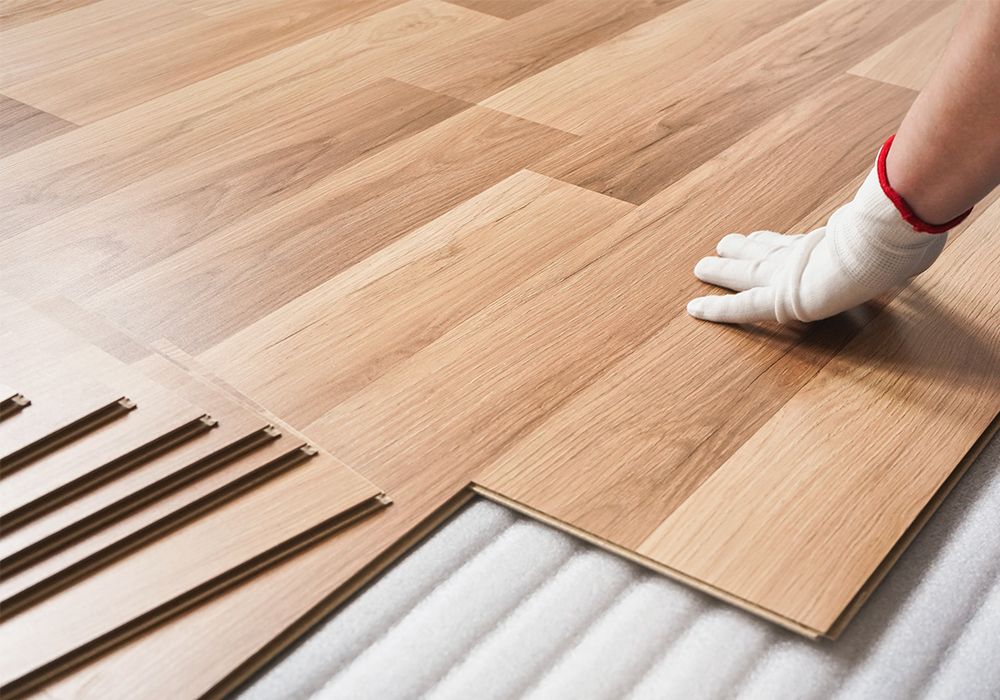Installation Process of Wooden Flooring
With the help of our experts guide, learn how to install wood floor tiles and hardwood floors. Appreciate longevity and design in your home.

Hardwood floors are one of the most common flooring options for homes and may provide any region in your own home's character, warmth, and value. Hardwood floors are a long-lasting cloth that comes in a range of colours and styles, such as engineered and solid. You can research a few distinctive install techniques if you need to put in a hardwood ground yourself. It's vital to recognize the 3 essential strategies of hardwood ground installation click-lock, glue-down, and nail-down whilst getting to know a way to install wood flooring.
You may also renovate your home at an inexpensive value and with style by following this guide, on the way to train you the way to install hardwood flooring yourself. The strength of porcelain tiles and the organic beauty of hardwood are combined in wood floor tiles. Furthermore, this type of flooring is relatively less expensive than natural hardwood.
It comes in an assortment of colours, patterns, and styles and is simpler to keep. The majority of bricklayers, though, are unsure of how to install them. After all, to fully profit from wood flooring tiles, appropriate installation is essential.
Techniques Used to Install Hardwood Floors
There are three approaches to putting in wood flooring; the technique that works great for you may rely on the sort of floors you want, along with laminate, strong timber, or engineered wood. Let's examine the three wooden flooring installation techniques and their suitability.
Method of Installation Using Nails or Staples
It is normally the job of a certified flooring installer or fitter to execute the nail-down or staple-down method, which is arguably the most difficult to execute. It calls for a great deal of skill and often specialized equipment like a floor nailer.
As it is not possible or at least not recommended to nail into concrete, this method can only be used in situations where there is a hardwood subfloor. Solid wood floors are the most popular type of flooring for nail-down installations because glue-down methods tend not to work well on them because of their extra thickness and increased susceptibility to expansion, contraction, and movement.
For engineered wooden plywood and flooring, the nail or staple-down technique can be applied. Nevertheless, the glue-down approach is typically chosen since it is quicker and less expensive, and it may be used to install engineered wood floors quite successfully. This is not a technique that works well with laminate flooring.
Planks should be set in the opposite direction of the floorboards if a nailed or stapled installation is to be placed over a wooden subfloor made of floorboards. This gives the laid floor much more solidity. If, on the other hand, the subfloor is made of plywood, the flooring can be installed in any direction, though it usually faces light sources like windows.
Furthermore advised is the use of a poly-foam underlay beneath the flooring, which should stop any squeaking and offer some insulation against heat and sound.
Glue-Down Installation Technique
As with any installation technique, a sound, stable, and successful glue-down installation depends heavily on the state and readiness of the subfloor. As the name implies, the glue-down method entails fixing the boards to the subfloor using specialized adhesives for bonding agents. This technique can be applied to concrete or hardwood subfloors; however, it requires the laying of a two-part damp-proof membrane beforehand if it is to be applied to a concrete/cement subfloor.
This creates a good surface for the glue to adhere to in addition to keeping any moisture from the subfloor from seeping into your flooring. When choosing which glue to use, always be sure to consult the manufacturer's directions and suggestions as different types are meant for different purposes. Although the glue-down method is not advised for laminate wood floors, it is appropriate for solid and engineered wood floors.
Floating Method Installation
Although you will still need to be able to measure and cut properly, the floating installation method is the simplest of all the options and the best option if you are an avid do-it-yourselfer and are considering doing it yourself. Unlike the other ways, where the flooring is fixed to the subfloor, with this method the boards are fixed to each other.
In tongue and grooved systems, this is accomplished by applying PVA adhesive in the groove; in click-lock systems, on the other hand, the boards lock together without the need for extra adhesive. This implies that the floor grows as a whole when it does so, which typically happens in the summer. As with any installation method, an expansion space is allowed around the room's perimeter in addition to any other immovable objects to account for this.
Although it works well with engineered wood floors as well. Also, laminate and wooden plywood flooring is the best material for the floating approach. It is not advised to install a solid hardwood floor using this procedure.
Conclusion
To acquire a long-lasting and aesthetically pleasing finish, installing timber flooring entails meticulous plans, practice, and execution. It's important to start with precise measurements and choose the right kind of wooden flooring. The installation of a moisture barrier and leveling of the subfloor properly guarantee a solid base for the wooden planks. For a flawless and durable finish, installation techniques (i.e., glue-down, nail-down, or floating) must follow manufacturer recommendations.
The success of the project as a whole is influenced by careful attention to detail during the installation process, such as keeping the right spacing and acclimatizing the wood. Last but not least, after installation, adhering to recommended maintenance procedures helps maintain the hardwood flooring's integrity and beauty for many years. Wood flooring adds warmth and timeless elegance to living areas. Additionally, homeowners may reap these benefits with careful attention to detail at every stage.